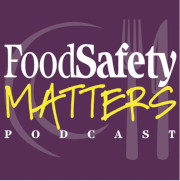News
Image courtesy of: Oscar Gutierrez Zozulia (iStock / Getty Images Plus)
Stay informed on important industry, regulatory, and technical news in the food safety and quality assurance sectors within the global food industry.Image courtesy of: Oscar Gutierrez Zozulia (iStock / Getty Images Plus)
Stay informed on important industry, regulatory, and technical news in the food safety and quality assurance sectors within the global food industry.Image courtesy of: Riccardo_Mojana (iStock / Getty Images Plus)
Contamination of food, beverages, and water includes physical, chemical, and microbiological concerns, as well as allergens (the Big 9, formerly the Big 8).Image courtesy of: kerdkanno (iStock / Getty Images Plus)
The categories of food for which food safety concerns are examined include beverages; dairy and eggs; ingredients; meat and poultry; natural and organic; fresh produce; ready-to-eat (RTE); refrigerated and frozen; seafood and shellfish; plant-based; and alternative proteins.Image courtesy of: Halfpoint (iStock / Getty Images Plus)
Management in food safety includes safeguarding business continuity and product quality through risk assessment, personnel and industry training, sharing best practices and case studies, and establishing robust food defense mechanisms.Image courtesy of: Gri-spb (iStock / Getty Images Plus)
Process control in food safety describes engagement with processes, procedures, and practices that help monitor and ensure the safety and quality of food during production and processing.Image courtesy of: DusanManic (iStock / Getty Images Plus)
Regulatory concerns include audits and inspections, government agencies, the pivotal Food Safety Modernization Act (FSMA), Hazard Analysis and Critical Control Points (HACCP), and international standards and guidances.Image courtesy of: Maksym Belchenko (iStock / Getty Images Plus)
Sanitation is a fundamental aspect of food safety, as safe food cannot be produced in the absence of hygienic conditions. Sanitation includes the methods, procedures, and chemicals used to clean food processing equipment, as well as hygienic design of facilities and equipment and food worker hygiene.Image courtesy of: JamesBrey (E+)
The food supply chain extends from growers and ranchers to food processors to distributors to retail foodservice outlets to consumers. The food supply chain is commonly referred to as “farm to fork” and includes every step or link in the chain.Image courtesy of: AlexRaths (iStock / Getty Images Plus)
Testing and analysis help ensure food safety and quality by determining if pathogens, chemicals, or allergen residues are present in the processing environment or food products.
Food Safety Matters is a podcast for food safety professionals, hosted by Food Safety Magazine – the leading media brand in food safety for over 20 years. Each episode features a conversation with a food safety professional sharing their experiences and insights on the important job of safeguarding the world’s food supply. New episodes are posted twice per month.
Subscribe wherever you get your podcasts!
Copyright ©2025. All Rights Reserved BNP Media.
Design, CMS, Hosting & Web Development :: ePublishing